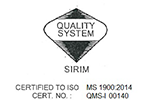Where Are Islamic ETFs Heading?
Exchange Traded Funds (ETFs) emerged as one of the most innovative financial instruments of the 20th century. It is structured similar to mutual fund, tracks an index and trades like a common stock on a stock exchange. The ETF’s advantages to investors include diversification, index tracking, transparent portfolio holdings, low fees and tax efficiency, to name a few.
According to the Bloomberg, the global ETF market currently worth more than four trillion dollars. While there had been unprecedented growth of the conventional ETFs, Shariah-compliant or Islamic ETFs stood at USD300 million only or about 0.01 percent of global ETF market size since the listing of first Islamic ETF on the Istanbul Stock Exchange in 2006.
Islamic and conventional ETFs share common characteristics. The main difference between the two is the benchmark index that the Islamic ETF tracks. An Islamic ETF only tracks an Islamic benchmark index where the index constituents are comprised of Shariah-compliant companies or assets.
In Malaysia, the first Islamic ETF was launched in January 2008, which tracks the Dow Jones Islamic Market Malaysia Titans 25 Index as a benchmark index. As one of the most developed Islamic capital market, Malaysia has four Islamic ETFs listed on Bursa Securities at present, taking the nation’s status as the largest Islamic ETF issuer globally.
Islamic ETFs has the advantage to position Malaysia as a hub for Islamic finance. It can be the next big thing for Islamic capital market after sukuk, which has made inroads in the global Islamic capital market landscape. Its features as an innovative financial product have unique market attraction to GCC countries, Europe and Malaysian market. But what should be done to develop and strengthen the Islamic ETF market?
For Islamic ETFs to catch up with conventional ETFs, it needs to reach an optimal market figure to be cost-effective. However, none of the current Islamic ETFs have assets of more than $100 million, whereas bigger conventional ETFs have asset under management of few hundred billion in value. In order to reach the optimal market size, Islamic ETF market players may learn how the Japanese developed their ETF market. The government of Japan introduced the ETF buying program through the involvement of Bank of Japan. For Malaysia, the institutional investors can play the role to further boost the Islamic ETF market by having a portion of their investment portfolio represented by Islamic ETFs.
In the retail market space, there are clear differences in the way the funds are marketed to investors in the US and Asia. An estimate of 90 percent of funds in Asia is commission-based. A vibrant ETF market would depend on the evolution from commission to fee-based distribution networks. The fact that ETFs are structured as low cost funds, the market players may have less motivation to grow the ETF market segment. To overcome this issue, Malaysia may want to consider incentivising a package of Islamic ETFs with a fee-based advisory model to retail investors.
Recent initiatives by the Securities Commission, such as the issuance of Shariah parameters on Islamic ETFs based on gold and silver, the launch of Islamic Fund and Wealth Management Blueprint, and the establishment of an ETF taskforce to lower the minimum capital requirement for issuers and widen distribution channels, are definitely positive moves for the Islamic finance and ETF industry. A framework is also in the pipeline to diversify the ETF products, including futures-based, leveraged, and inverse ETFs, which will provide investors with cost-efficient entry points to access more sophisticated investments.
Nonetheless, due to the phenomenal growth and fears of a growing bubble, ETFs are attracting the market and regulatory attention. A case in point is Ireland’s central bank, who recently called for greater scrutiny of how the ETF industry works and whether the existing ETF guidelines were adequate. In this current scenario, Malaysia has the advantage to learn from other developed ETF markets to enhance market transparency and resilience through Islamic ETFs and to introduce a proper control mechanism should the ETF market burst into bubbles.
Previous Budget 2012 has announced an allocation of RM200 million as seed monies for ETFs, as an incentive program to promote the development of ETF market. Five years has gone and only three Islamic ETFs were issued post-Budget 2012. Perhaps, it is time to revisit this potential of Islamic ETF segment and to provide some market incentives in the next Budget?
We will never know where the Islamic ETF is heading and how far it can fly. It may require significant structural and regulatory changes before taking off. But with real focus and concerting effort to develop this trillions market, the possibility of sudden upside surprise is not impossible.




